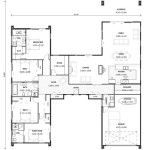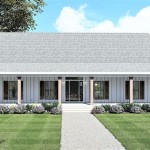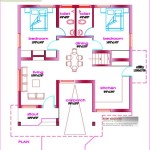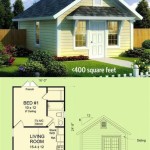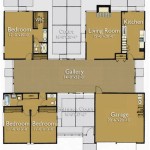Tiny Home With Loft Floor Plans: Maximizing Space and Efficiency
The tiny home movement has gained considerable momentum in recent years, driven by a desire for simpler living, reduced environmental impact, and financial freedom. A defining feature of many tiny homes is the incorporation of a loft, which significantly expands the usable living space without increasing the overall footprint of the structure. Loft floor plans are particularly popular because they offer a dedicated area for sleeping, storage, or even a small home office, allowing for greater flexibility and functionality within a limited area. Understanding the principles and considerations involved in designing a tiny home with a loft is essential for anyone considering this lifestyle.
Designing a tiny home with a loft necessitates careful planning and attention to detail. Unlike conventional homes where space is often abundant, every square inch in a tiny home must serve a purpose. The loft, in particular, requires strategic design to ensure accessibility, comfort, and compliance with local building codes. Factors such as ceiling height, ladder or staircase design, ventilation, and natural light must be thoroughly evaluated to create a functional and livable space. Optimizing the layout and selecting appropriate materials are also crucial for maximizing space and creating a comfortable atmosphere.
Understanding Loft Design Principles
The design of a loft in a tiny home is governed by several fundamental principles that prioritize safety, usability, and comfort. Among the most important considerations is the available ceiling height. While code requirements vary depending on location, it's generally accepted that a habitable loft space should have a minimum ceiling height of at least 7 feet. This can be challenging to achieve in a tiny home, where overall height is often limited by transportation or structural constraints. Compromises may be necessary, such as lowering the floor of the main living area or opting for a slightly less spacious loft.
Accessibility to the loft is another critical aspect of the design. The most common methods of accessing a loft are ladders, stairs, and alternating tread stairs. Ladders are the most space-efficient option but can be challenging for individuals with mobility issues or those carrying items. Stairs, while requiring more floor space, provide a safer and more comfortable means of access. Alternating tread stairs offer a compromise between the two, providing a steeper ascent than traditional stairs but with individual treads designed to accommodate each foot.
Ventilation and natural light are also crucial for creating a comfortable and healthy living environment in a loft. Proper ventilation helps to prevent condensation and maintain air quality, while natural light can make the space feel larger and more inviting. Windows or skylights should be strategically placed to maximize natural light and airflow. The orientation of the tiny home can also affect the amount of natural light received, with south-facing windows generally providing the most sunlight throughout the day.
Beyond these core principles, the specific design of the loft will depend on its intended use. A sleeping loft, for example, may require different considerations than a loft used for storage or as a home office. Sleeping lofts should prioritize comfort and privacy, while storage lofts may focus on maximizing storage capacity. Home office lofts should be designed to minimize noise and distractions, and to provide adequate lighting for work.
Key Considerations for Loft Floor Plans
When developing a loft floor plan for a tiny home, several key considerations should be taken into account to ensure functionality and compliance with regulations. First and foremost is the structural integrity of the loft. The loft must be able to support the weight of occupants and any furniture or belongings stored there. This requires careful engineering and the selection of appropriate building materials. Consult with a qualified structural engineer is crucial to ensure that the loft is structurally sound and complies with all applicable building codes.
Another important consideration is the placement of the loft within the tiny home. The location of the loft can affect the overall layout and flow of the space. Lofts are often positioned above the kitchen or bathroom, as these areas typically do not require high ceilings. This allows for the loft to be positioned without drastically increasing the overall height of the tiny home. Careful consideration should be given to the placement of windows and doors to ensure that natural light and ventilation are not obstructed.
The design of the ladder or staircase leading to the loft is also critical. The ladder or staircase should be positioned in a location that does not impede movement within the tiny home. It should also be designed to be safe and comfortable to use. Ladders should have adequate handrails and non-slip treads. Stairs should have a comfortable rise and run, and should also be equipped with handrails. Safety is paramount, and the chosen access method should be suitable for all occupants of the tiny home.
Local building codes and regulations must also be taken into account when designing a loft floor plan. Many jurisdictions have specific requirements for loft spaces, including minimum ceiling heights, egress windows, and fire safety measures. It is essential to research and comply with all applicable codes to ensure that the tiny home meets legal requirements and is safe for occupancy. Failure to comply with building codes can result in fines, delays, or even the forced removal of the loft.
Maximizing Space and Functionality in Loft Floor Plans
One of the primary goals of designing a tiny home with a loft is to maximize space and functionality. This can be achieved through careful planning and the use of space-saving design techniques. Vertical space is particularly valuable in a tiny home, and the loft provides an opportunity to fully utilize this space. Consider incorporating built-in storage solutions, such as shelves, drawers, and cabinets, into the loft design. These can help to keep the space organized and clutter-free.
Multifunctional furniture is another effective way to maximize space in a tiny home with a loft. For example, a sofa bed can serve as both a seating area and a guest bed, while a folding table can be used for dining or as a workspace. Choose furniture that is appropriately sized for the tiny home and that can serve multiple purposes. This will help to reduce clutter and make the space feel more spacious.
Lighting is also an important factor in creating a sense of space and functionality in a loft. Adequate lighting can make a small space feel larger and more inviting. Consider using a combination of natural light and artificial lighting to illuminate the loft. Skylights and windows can provide natural light, while recessed lighting and strategically placed lamps can provide artificial light. Use light-colored paint and furnishings to reflect light and make the space feel brighter.
Finally, consider the overall flow and layout of the tiny home when designing the loft. The loft should be integrated seamlessly into the rest of the space, and it should not feel like an afterthought. Ensure that there is adequate circulation and that the loft is easily accessible from the main living area. By carefully planning the layout and incorporating space-saving design techniques, it is possible to create a tiny home with a loft that is both functional and comfortable.
The integration of a loft into a tiny home floor plan requires diligent planning and execution. By carefully considering accessibility, headroom, and intended use, one can successfully incorporate a loft to expand the living space in a tiny home while maintaining its overall functionality and aesthetic appeal. The result is a compact yet comfortable living environment that embraces the minimalist philosophy of the tiny home movement.

Tiny House Floor Plan With Bedroom Loft

Tiny House Floor Plan With Loft

The Mcg Loft A Tiny House With Staircase Humble Homes

10 Unique Plans Of Tiny Homes And Cabins With Loft Craft Mart

Erschwingliche Tiny House Pläne 105 Quadratfuß Cabin Bunkie Mit Loft Gebäude Plan Keine Genehmigung Kleines Haus De

Loft Cabin Tiny House Floor Plans Small Design

10 Unique Plans Of Tiny Homes And Cabins With Loft Craft Mart

Modern Tiny House Plans

Tiny House Floor Plan With Bedroom Loft

Shawn S Customized Mcg Loft Tiny House Stairs Plans Floor


